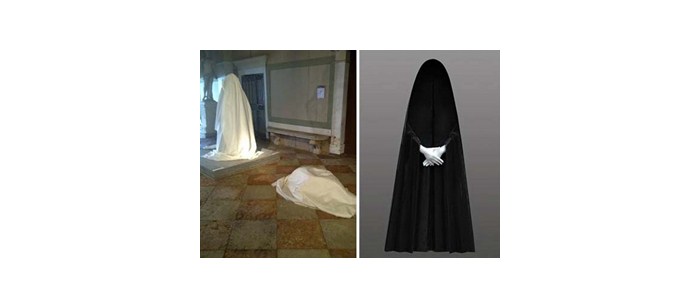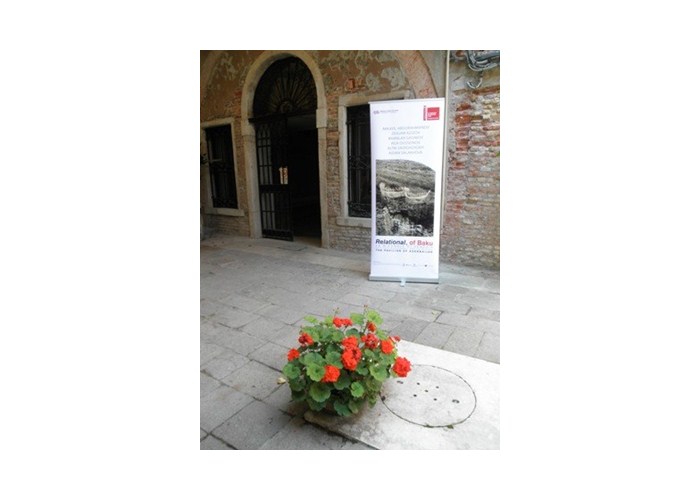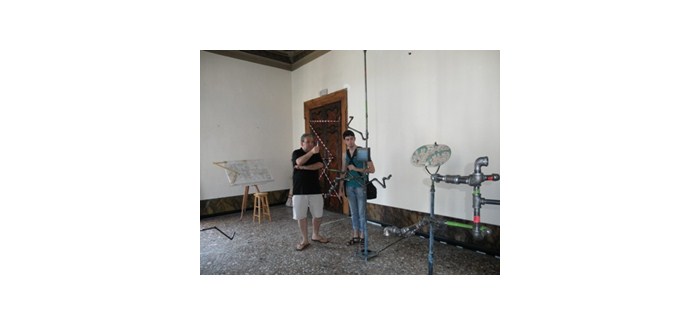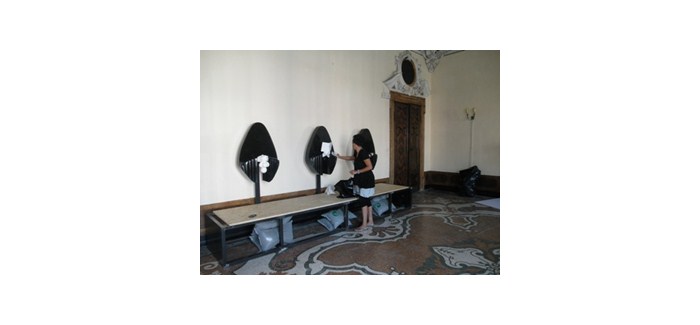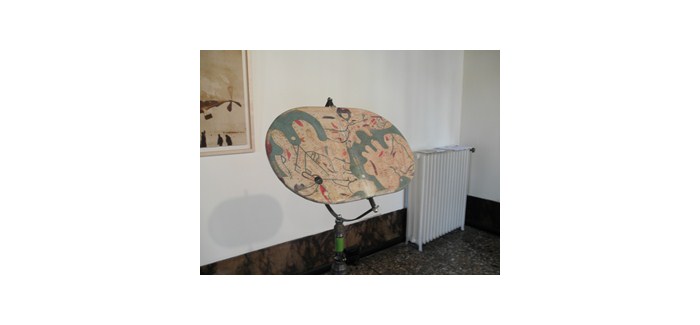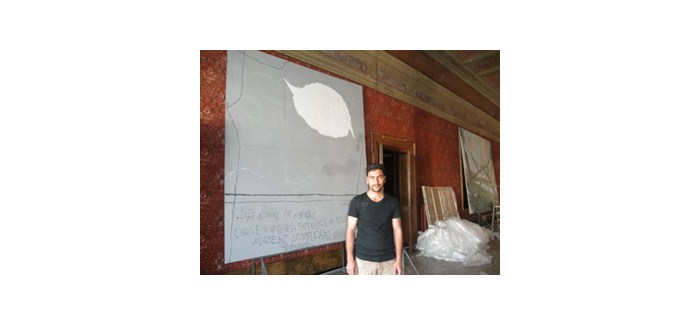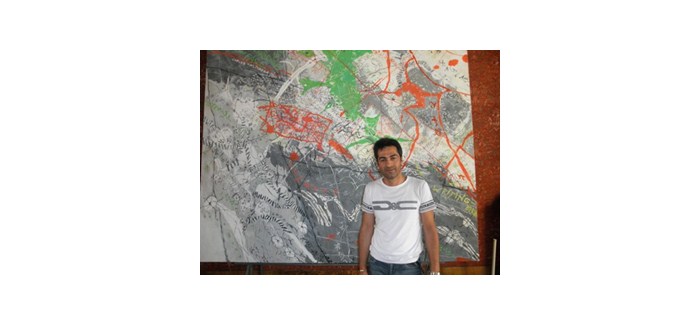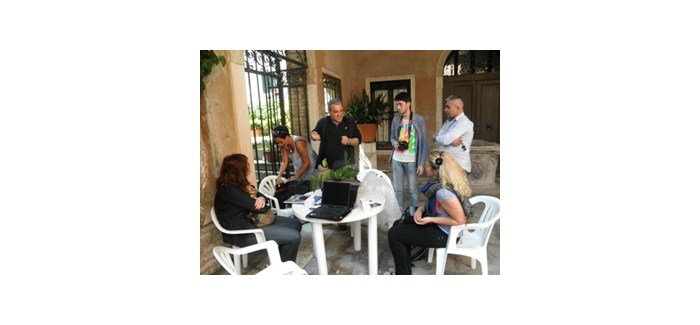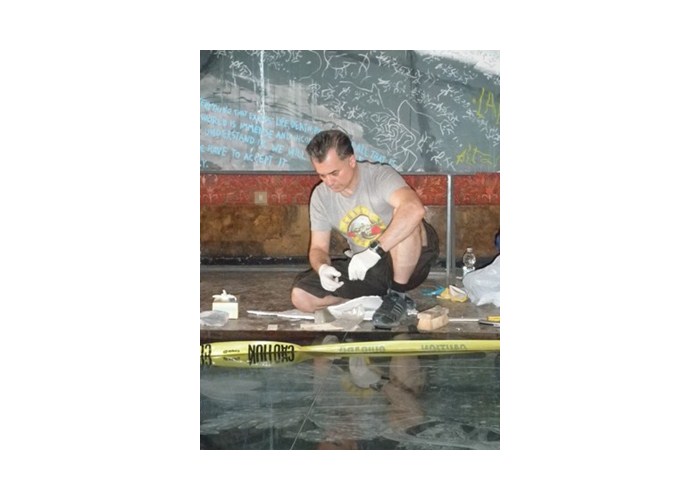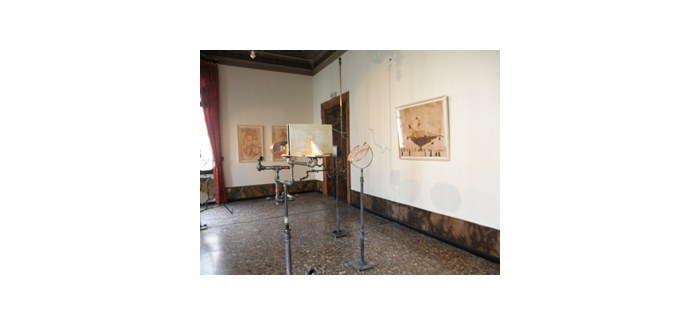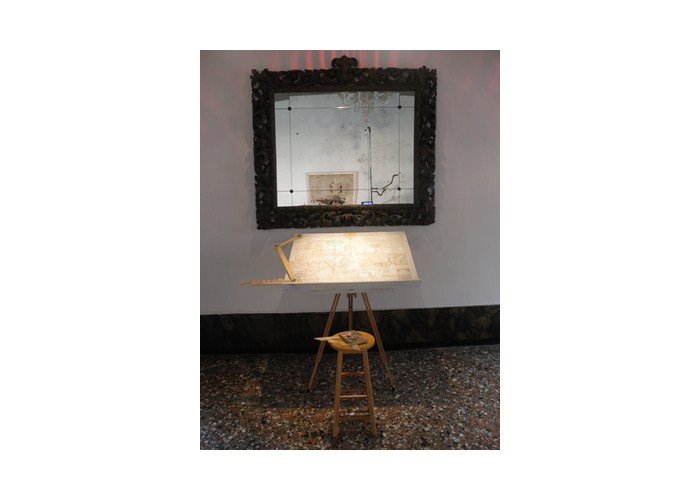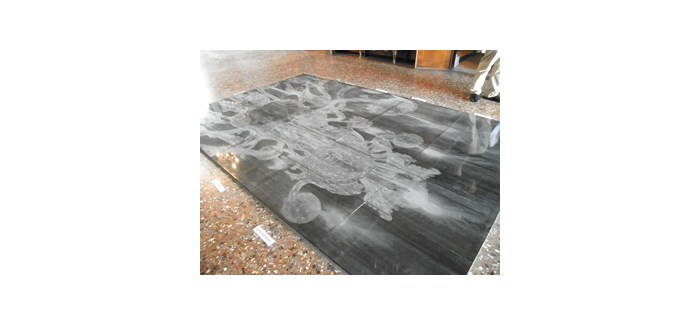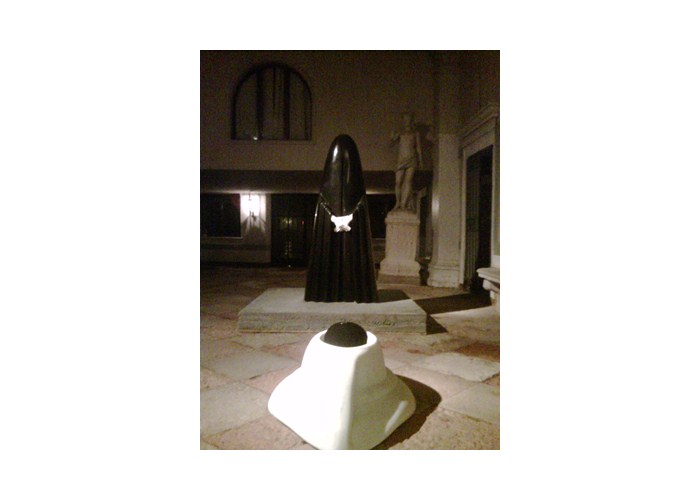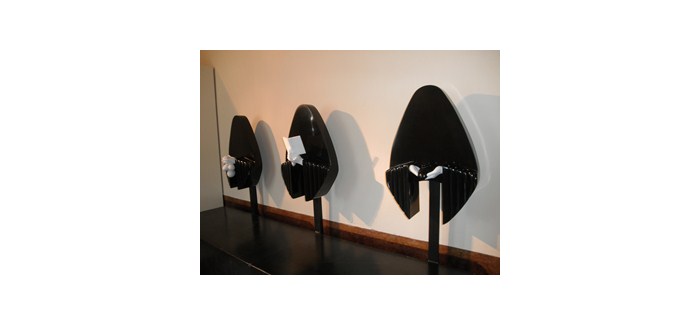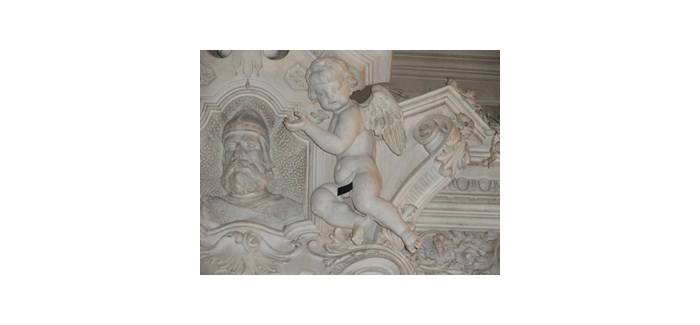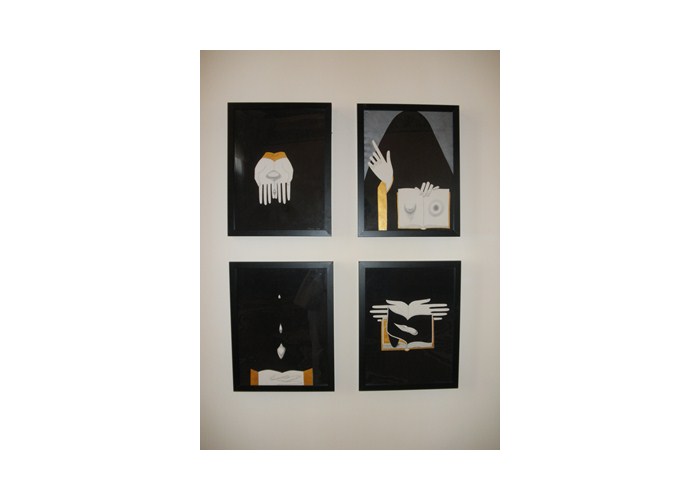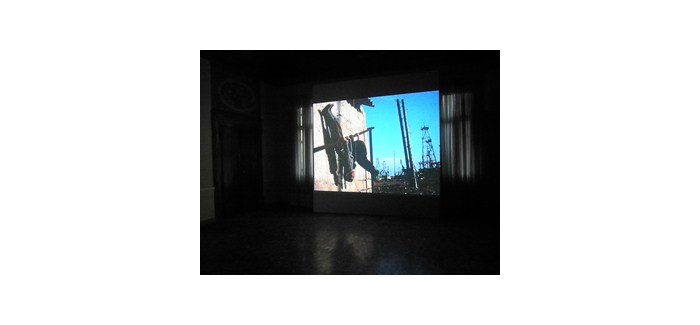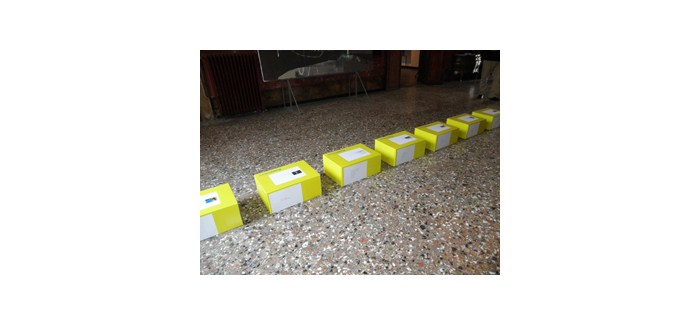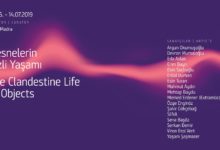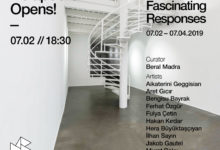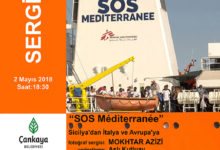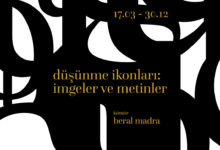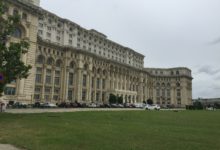2011-June-AZ Pavilion-Interview for Katerine Degot
THE PAVILION OF AZERBAIJAN
54th International Art Exhibition
la Biennale di Venezia
The Pavilion of Azerbaijan in the 54th International Art Exhibition
la Biennale di Venezia,
June-September 2011 presents
RELATIONAL, OF BAKÛ
MIKAYIL ABDURAHMANOV, ZEIGAM AZIZOV, KHANLAR GASIMOV, AGA OUSSEINOV, ALTAI SADIGHZADEH, AIDAN SALAKHOVA,
The exhibition is curated by curator and comissar of the Pavilion Cinghiz Farzaliev and curator Beral Madra (BM Contemporary Art Center, Istanbul) with the contributions of co-commissioner Vittorio Urbani (Nuova Icona, Venice).
The team of the Pavilion respectively consists of Assistant Curator: Amina Melikova, Editor: Togrul Afandiyev, Coordinator: Suad Garayeva, Coordinator: Mila Askerova, Photographer & Designer: Farhad Farzaliev and Exhibition Architect and Designer: Vincenzo Casali.
The venue of the Pavilion of the Republic of Azerbaijan is Palazzo Benzon on Canale Grande (Vaporetto Station Sant’Angelo).
The paintings of Mikayil Abdurahmanov and Altai Sadighzadeh, the sculptures of Aidan Salakhova and Khanlar Gasimov, the multidisciplinary installations of Zeigam Azizov and Aga Ousseinov were conceived in accordance to “Illuminations”, the concept of the biennale and will be installed with dialectical arrangement to the abundantly decorated rooms of Palazzo Benzon. The works of these artists markedly advocate an inspiring culture of Baku, but the content and aesthetics of their work is extremely relational, intricate and complex and need to be perceived within the current common discourse of global art. Their current environmental context might be diverse, but their imaginary and hypothetical horizon, which opens to inter-cultural and inter-human relations, is common. Like many other of their generation, these artists have witnessed and experienced the political and economical transformation of the last four decades; all of them had a strong modernist inheritance, even if it was determined by Soviet ideology; and later all of them have experienced the rise of culture as symbolic capital. For all of them, Baku is the nucleus of the fire that has ignited their creativity, but they all had a desire to break through the borders of that officially programmed art and culture.
In current cultural environments in South Caucasus, Middle-East and the East Mediterranean there is a fusion of tradition, modernism, post-modernism and relational aesthetics, over and above a quest for subjectivity within the democratization processes. The works of these artists strongly reflect this fusion and subjectivity. However, this fusion and quest for subjectivity distinguishes itself from the Western model. In one perspective it strikingly embodies a 20th century rupture and unity of contradictory forms and concepts under the influence of Eurocentrism, Orientalism, Nationalism, Utopia and Chaos; in the other it includes the general reification of human relationship under the restraints of market economy. Yet, despite all these challenges the artistic praxis is pursuing globally widespread interests, effective and convincing opinions and enriching imaginary that come to existence in visual productions.
The tradition in Azerbaijan, as deep as Prehistory, is intentionally displayed in the graphic identity of the pavilion with an ornamental double-gondola, a picture inscribed onto the Gobustan rocks, southwest of Baku. The double-gondola from Baku, transported to the Grand Canale in Venice represents the universal cultural relations based on visual expression and production.
The Azerbaijan Pavilion is realized under the auspices of the Ministry of Culture and Tourism of the Republic of Azerbaijan.
RELATIONAL, OF BAKU
The Concept and Framework of the Exhibition
Beral Madra
Catch phrases such as The End of the Nation-State and Borderless World have been in our everyday vocabulary for almost three decades. Intellectuals are convinced that these phrases mean what is really happening to the nations, but the political schemes and economic systems they live in prevail according to the codes of nation state politics and economy. There are wide-ranging assertions that the nation-state is becoming archaic because it is no longer the best possible system to embrace societies that are becoming more and more heterogeneous with immigration and nation state systems cannot efficiently organize and control economic and social activity. Consequently the rationale behind nations has been hit by the fact that intercultural relations of communities and individuals, market manipulations and the power of knowledge and vital resources cannot be simply controlled for nationalistic goals. Regions have become more important than nations in the sense that they have the possibility to influence and to profit from global politics and the global economy, so that they seem to be autonomous of the nation-states to which they belong. Furthermore, investments, industries and individuals have been largely guided by the communications revolution and computerized information since the 80’s towards an intertwining of the local and the global, which in turn contributes to a borderless world.
Yet, there are still debates over controversial issues: Can individuals meet all of their needs for quality in the electronic communication systems and global marketplace? How can cultural needs such as historical and geographical rootedness, traditions, creativity be a major source of well-being in these systems without the support of the nation state subvention? The elimination of nations may increase
people’s freedom in regional and global interactions but may also lead to a malfunction of well-being. What are the social costs of a borderless world? It is too simple to say that globalization has a dissolving effect on the nation state. However, it is also sensible to speak about the openness and interdependence of nations, and that states have been robbed of their historical role and capacities. The rise of supranational actors, such as the European Union, regional unions and sub-national actors such as non-governmental organizations are indicators of potential change.
Based on these ideas, the question now is – if there are still nation states- how nationalism must be re-designed to improve the quality of life of individuals and the communities in which they live. At least, this question has been tackled by numerous post-modern theoreticians for almost half a century with particularly wide and profound effects on new concepts, forms, styles and aesthetics of global art and culture production.
In most of the exhibitions in the Venice Biennale the global public is tempted to look at the works of artists, who are generally convened under the heading of “national pavilions”. For nearly a century the Venice Biennale almost confirmed Rosa Luxemburg’s account of 1909: “…capitalism does not create that intellectual spirit in the air or in the theoretical void of abstraction, but in a definite territory, a definite social environment, a definite language, within the framework of certain traditions, in a word, within definite national forms.” (*)
Consequently, by that very system, a certain territory and a certain population is set apart as a cultural national entity, on which special, closer cohesion and connection of intellectual interests are focused. Artists from different nations present paintings, sculptures, installations, photography and video, which intentionally or unknowingly merge modernism, postmodernism and relational aesthetics that have evolved during the transformation of rapid and subsequently controversial national systems in their territories, which in turn are rapidly consumed by the biennale audiences of different nations. Whether the artists and their works can suitably be identified under the label of a nation is one of the crucial questions of this biennale and other “nation” labeled exhibitions. These ideas and questions can also be observed at the deep levels of sensibility in contemporary art productions. To our relief, the nation and its juxtaposition with the borderless world has been the subject of analysis and criticism both by artists and curators.
The ever evolving guidelines of contemporary art dictate that artists and curators focus on cities rather than countries/nations with the obvious fact that cities offer a fertile ground for art concepts, statements and art making forms and the freedom of expression. Cities do not necessarily reflect the fixed identities of nations; on the contrary they reveal multiple identities, the appeal of differences, as well as the vulnerability of the concept of nation. In today’s contemporary art milieu cities are the fields of inspiration and production; whereas nations are the subject of critical attention in art and cultural theory, due to their prominence and manipulative involvement in the arts and culture during the 20 th century. Even if cities are at the same time considered as sources of evil, marginality, social injustice, their complexity and enigma are being glorified by means of neo-liberal strategies of extreme profit and promotion. A city with a profound historical background and modernist and post-modernist strata of transformation is approached as a fertile ground in terms of the financial value of its emerging culture industry.
Baku has a complex historical and traditional background dating back to the 1 st century AD and, after a complex series of strata of different political and cultural transformations, currently is the most prosperous and expansive city east of Istanbul due to the fast growing economy of Azerbaijan where energy resources play a major role. In juxtaposition to the reality of its petroleum industry, the country has a rich agricultural region in the west. Petrol was discovered already in the 8 th century and since 1910, Azerbaijan has been supplying the world with oil. This economy has imprinted its image on the city, with the still but prolific seascape of the Caspian Sea. The well preserved historical city with its legendary Maiden Tower and the traditional daily life vitality on the one side and the ongoing constructions of skyscrapers of every shape, the multi-national company buildings and hotel chains on the other strongly reflect the predestined clash between tradition, modernity and post-modernity.
In this exhibition, six artists of two generations with different backgrounds represent Azerbaijan, but markedly advocate an inspiring culture of Baku. These artists have their cultural roots in Azerbaijan, their umbilical cord is always tied to their place of birth, but their work is extremely relational, intricate and complex to be mentioned under a definite national identity. All of them have witnessed and experienced the political and economical transformation of their nation in the last four decades; all of them had a strong modernist heritage, even if it was determined by Soviet ideology; and later all of them have experienced the rise of culture as symbolic capital. For all of them, Baku is the nucleus of the fire that has ignited their creativity, but they all have a desire to break through the borders of officially programmed art and culture. In current culture there is a fusion of tradition, modernism, post-modernism and relational aesthetics of globalisation that has similar instances in the socio-political geography of South Caucasus, Middle-East and the East Mediterranean. This fusion distinguishes itself from the Western model and strikingly embodies a 20 th century rupture and unity of contradictory forms and concepts under the influence of Eurocentrism, Orientalism, Nationalism, Utopia and Chaos. The tradition is as deep as Prehistory, to which we refer in our graphic identity with an ornamental double-gondola representation inscribed onto the Gobustan rocks, southwest of Baku. Modernism is experienced in its most radical way during the Soviet period. Post-modernism and globalisation are having their influence on culture by inflicting multiple dilemmas between two positions: socio-political and anthropological content, critical theory and market, commodity and spectacle.
Indeed four of them, Aidan Salakhova, Khanlar Gasimov, Zeigam Azizov and Aga Ousseinov, left Baku to work in the post-modern capitals of the 80’s and 90’s. Yet each of them had their own reasons and particular conditions that guided their choices. In their work we can discern the characteristics of art making in Moscow, New York and London.
If we make a general speculative analysis of artists who left Baku in the 80’s for Western centres, before the wall came down, we can say that they have been looking for liberation from the official art norms of Soviet-type visual culture or dominating modernist abstraction and naive–folkloric modernisms. They were pursuing a cosmopolitan, post-modernist cultural environment and therefore can be recognized as post-avant-gardes of their original art milieu.
During and after the innovative explosions of the 1980s, they became culturally relativist and identity-driven in their so-called Diaspora environment. As artists, who emigrated to so-called ‘Western centres’ in those years, they also became politically polemical and used the more subjective strategy of ‘putting the self in the frame’. This phenomenon of Diaspora artists was mapped in mainstream art in relation to wider socio-political and cultural developments and influenced exhibition concepts and contents in Western centres; however, after the progress of democratisation in the countries of origin and after it was acknowledged and marketed in the mainstream, it lost its rebellious meaning.
Currently, when the contemporary art moment is less politicized, more market oriented and aesthetically polished, the growth of racism, anti-racist, feminist and identity politics, and the theoretical ‘revolutions’ all over the world bring these social and political problems onto the agenda of artists, who are still termed immigrants; as a result, they still deal with themes like oppression, political disturbance, identity crisis and many related themes. What has changed is that all emigrant artists are not being classified under the title “Diaspora”.
Zeigam Azizov: lives and works in London. He deals with neo-capitalism and crucial media influence on the psychology of the individual and society and reveals potential anthropological and social transformations, particularly towards the subjectivisation of the individual. He utilizes text, photography and film in very logical and clear-cut installations. The viewers’ position within these installations is intense involvement in the visual dialogue between the film, the image and the text. For example pointing to the mass- media “as a surveillance machine” he realized “Hard Spell: a Promise to Generations,” in Kunstraum Lakeside 2007. This work is referring to the BBC program of spelling competition between children- ‘Hard Spell,’ which was broadcast in 2005. Zeigam perceived this program as a “spectacular way of training children for the emergent global economy” and a kind of control of the convictions and attitudes of young generations within this economy. He says that “In the complex ideological, economic, as well as aesthetic circumstances, such as ours, the role of the artist today is to consider what is left out, forgotten and to contemplate them and to tell another story. The point is to regain the status of art as something good to think with and once it regains its status of ‘thinking’ and ‘speaking’, it can also offer sense and meaning, powerful communicative tools for the dialogue. What is needed now is a big picture, a clear concept, a sharp view and in short, good story to help to figure out the “name of the game”.
In the exhibition Relational, of Baku his work entitled “Symposium” consists of a black room, in which he shows a film about children playing on the derelict oil-fields of Baku, as a reminiscence of his childhood. The video is accompanied by a text, which is a “lecture”. In the middle hall he displays documents and photographs of the process of this work in seven boxes. With this work Azizov continues his quest of deciphering the stereotype narratives for the sake of the individual’s position in the society of spectacle.
Living and working in Moscow and Baku, Aidan Salakhova’s work concepts in the last two decades of Moscow art scene demonstrates a steady approach to the criticism of women’s position within the dogmas and dichotomies of stale traditions and convictions. The veil has been the leading metaphor in her recent work; in drawings, paintings, photography and now as sculpture. The veil has been a subject matter for many artists since the 90’s; mostly immigrant women artists from Islamic countries. It was used as an element to question the oppression of women in the Islamic world in juxtaposition to the liberty in the Christian and to reveal the diverse identities, even power and eroticism behind this ‘covering’. Salakhova’s series of paintings of veiled figures and the three marble semi-abstract figures present us with a different perspective on this phenomenon. The knowledge behind her depicted form is Orthodox Christianity, the religion of the country she is living in. Religion has not been a significant matter in her life, having grown up in an ideological system in which religion was not a political tool and being a liberal daughter of an artist father. Yet, during the age she is living in now, religion has become a key element in world politics and this ambiguous game of exploiting women is being played out over the women’s bodies and souls. Her work addresses political, sociological, psychological and spiritual dimensions in both Islamic and Orthodox worlds through depicting the veil, a symbol of religious oppression but also a stereotype of Orientalism. She addresses Christian and Islamic societies to confront and to deconstruct the ambiguous meanings of this dark cloth. In the formulation of her statement she uses an archaic poetic visual language which relates to Islamic miniatures and Byzantine icons. The series of black veiled women is in one way highly reminiscent of The Virgin of Vladimir, the 14th century icon in the Tretiakoff Gallery, Moscow. In anoother way, however, they refer to the stereotypical Orientalist photographs of veiled women. These exquisite figurations with smooth black surfaces on golden backgrounds also have atmospheric eroticism created with the delicate gestures regarding matters of concealment and exposure of female sexuality. Her work of three reliefs abstractly rendering veiled figures with symbolic relics in their hands, the related teardrops referring to the sensitivity, grief and joy, and six of her exquisite miniature based paintings are installed in one of the rooms of the Palazzo. The ceiling figures of this room are intervened with black bands as an implication to the deep rooted prohibitions within the religious convictions.
Living and working in New York, Aga Ousseinov’s work can be associated with both surrealism and futurism and the overall impression of his abundant production sways from ‘high’ art to decorative objects, intentionally eroding categorical divisions. His concern with formal issues, such as scale and material is simple and unpretentious, touching the edges of playfulness, but his expression of philosophical and poetic ideas are ambitious and elevating. In this way his installation comes close to the needs of the viewer who is curious to search out the misery of the artist. With his inventive skills, Aga Ousseinov designed futuristic floating machinery and fanciful creatures using paper, wire and papier maché instead of the classical materials of sculpture making. These remarkable sculptures were modelled and formed in a delicate style to give them a look of a re-modelled world. The implications of his pieces are serious, albeit these pieces can also be as playful as children’s toys. They humorously affirm the role of fetishes for contemporary society. Ousseinov’s masks made of meshed paper imitate the ceremonial masks of indigenous rituals juxtaposing the stereotypical image production of consumerism. His work is dreamy and fantasmatic, but at the same time addressing timely issues of consumerism and globalization. He states that these “inventions” refer to his early life in the Soviet Union, where hopes for Utopian progress abounded; however, his archaic machine vessels and ironic blueprints envision a world infected with a futile hope for progress. His work for the Venice Bienale entitled “In the Middle of Erewhon II” consists of an interactive, life-sized machine like installation that metaphorically refers to aqua environment of Venice, in which the audience can not only playfully navigate, but also reflect about how to proceed in this world of political, economic, ecological, social and cultural crisis. The mechanic character of his work has twofold references. One is linguistical and indicates the Greek words “amechania” (helplessness) and its antonym “mechania”. The other is conceptual and art historical and refers to the agit-trains of the early Soviet time. The installation, transforming the room of the palazzo into a curiosity cabinet incorporates a Periscope (with video footage on a screen), a Weapon (in the shape of a vintage stereoscope with a slow moving slide show on a digital screen in stereo-views) and an Engine (with a digital screen showing another video footage).
Living and working in Hamden, Connecticut, Khanlar Gasimov’s work can be classified as a combination of performance, installation and sculpture. After Rosalind Krauss’ verdict that “sculpture itself had become a kind of ontological absence, the combination of exclusions, the sum of the neither/nor” and after the Minimalist’s contribution to deconstruct Modernist sculpture, this hybrid recipe has been a way of rendering the multidisciplinary activities of the artist. One of his sculptures is in the Azerbaijan Garden in the Cleveland Cultural Garden and is inspired by the 12th century Azerbaijani poet Nizami Ganjavi and the 14th Century Azerbaijani philosopher Imadeddin Nasimi. The huge stainless steel bowl he produced reflects its natural environment and becomes a non-objective entity. This poetic work contains contradictory statements: On the outside with the reflection of the earth, it advocates for limits, containment, and the finite and on the inside with the reflection of the sky, it represents freedom, boundlessness and openness. These are the concepts of Gasimov, which also underline his values as an artist of the East, eventhough his works such as a series of silicon underwear that severely tackle body politics and an abundant installation of rice and paint that ironically deal with economic values invite the viewer to performative involvement. For the Venice Biennale he has conceived and produced two series of sculptural works that relate to poetry, a still well protected and popular art in Azerbaijan. There, poets are conveying a subjectivity, free spirit and expression of the people and guiding the society of spectacle to alternative perception and contemplation of the artistic, political and economic realms. Gasimov, invited the young poets to recite to empty canvasses he has given them, thus involving them into his installation as a form of hermetic performance. This performance is impregnated into the canvasses and is transported into the exhibition space as a basis for the marble sculptures he has produced in Baku. The circular slabs in his room are engraved with the skeleton chin images as a reference to the existence of the poets; whereas the slabs in the middle hall of the Palazzo are engraved with the image of illuminated chandeliers above, as an inclusion of the space into his work.
Painting has been and still is the most appreciated art work in Azerbaijan. Despite the cliché question ‘Is painting dead?’ artists, curators, critics, scholars and collectors still deal with paintings. In the age of proliferation, painting has still a distinct advantage, because of its accessibility among the various art forms and its commercial viability. The virtuoso skill of the artist and the myth of the painter as a spiritual leader are still respected. Artists in the Non-Western territories have had various solutions throughout the 20 th century when the Western influences began. They experienced perspective and realism, but also drew inspiration from their traditional arts and translated miniatures, calligraphy and other abstract ways of expression into an emblematic language of tradition and modernism. They painted epic canvases in a mixture of styles, with painterly attitudes, floating between abstraction and representation and reflecting complex spiritual themes, such as Sufi thought. Painters in Non-European countries, where art was either supported by the state or discarded as non-ideological, have discovered in abstract art their spiritual freedom. The artists who work with paintings now have to face an anachronism; however, they do not struggle to find a resolution for this anachronism, but rather they want to uncover the intricacies and contradictions within this anachronism itself.
The exhibition presents two renowned painters who live and work in Baku: Altai Sadikhzade and Mikayil Abdurahmanov. They wilfully resist the temptations of photography, video and related post-media art, but nevertheless make use of the popular images of the popular and consumption culture, infusing high and low into their paintings. Their work leads the viewer to the depths of the recent transformations of the society with an aesthetic approach and subjective philosophy.
In Altai Sadikhzade’s canvases and exquisite drawings rich and delicate prospects of abstraction mingle with miniature like scenes and fantastic images of Baku life. He merges his desire for creating a post-modern mythical reflection of the society with surrealistic images, which derive their force from miniatures, caricatures, comics and illustrations. The first thing one discerns in these paintings is that they convey a style with discreet, subtle colours and fine drawing and evoke a humoristic narration. Pale greys, blues and greens cover the surfaces. On top of that, there are vigorous drawings, with which recurring motifs are painted – geometric abstraction with circles, triangles, and narrations with city-scapes, sea-scapes and plants. Quotations and sometimes unreadable texts accompany the images. The texts refer to local and international poets, to Sufism, to Western philosophy or to casual dialogues. His subject matter is on the one hand the idealised and optimised city-scape within peculiarities of its daily life and the occurrences of welfare society. On the other, he is being loyal to the traditional artists’ way of mingling the visual and verbal culture. One of his sculptural works, that replicate the figures in his paintings, will be displayed in the exhibition in addition to a series of paintings. Multilayered figures and objects liquefied to abstract shadows and surfaces dominate Mikayil Abdurahmanov’s often dark blue and purple, almost sinister paintings; however, the tamed, but spirited black figures appear from the depths. One can assume that these demonic black figures refer to figures of gothic comics and popular culture. The proximity of abstraction and figuration in these paintings recall Achile Bonita Oliva’s statement that “the image is engaged through a neutralisation of its strong meaning as the occasion for a representation in which the abstract and the figurative are equalized.”(**) Here is a conscious anachronism; modernist minimalism, which is provided with almost monochrome dark surfaces, is merged with post-modern imagery. That is only half the point. With their obvious darkness these paintings cannot reflect a sceptical rejection and negativity alone. These dark gloomy paintings also contain social commitment and expectation. The way they mingle chance elements and the imaginative decision of the artist through abstraction is important. Abdurahmanov shows prospects and conclusions. He indicates the most primary human sensations of loss and finding. These kinds of abstractions always reveal a visible tension between the struggle to create the final image and definite buoyancy. The experience of the artist accomplishing the tension between irresolution and order is plainly visible in these paintings. For the Venice Biennale he conceived new paintings that reflect the memory, spirit and traditional peculiarities of the room they will be hanged in. For all these artists, the Venice Biennale participation is a recognition and encouragement of the work they have been doing for two-three decades. Yet, it is also simply another project for them, in which they will show associations to their work, but also unpredictably take new positions and make new decisions. —————————————————————————————-
*Rosa Luxemburg, The National Question, The National Question and Autonomy; http://www.marxists.org/archive/luxemburg/1909/national-question/ch05.htm
**Achile Bonito Oliva, The International Transavantguardia, Flashart, no 104, 1981, p. 36

